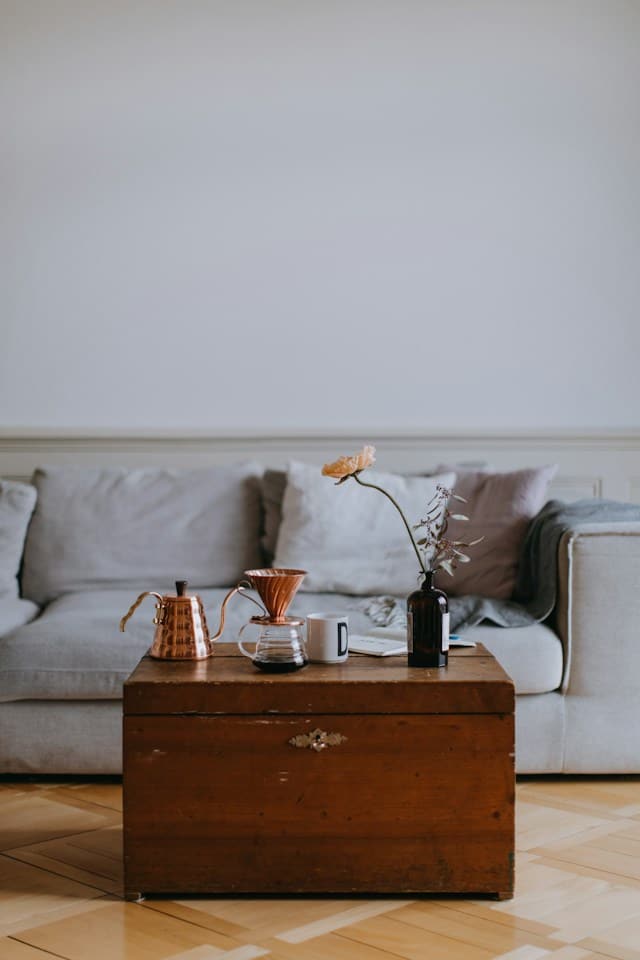In the world of interior design, integrating classic architectural elements with modern aesthetics is akin to fusing the old with the new. This intriguing fusion often results in spaces that exude charm, sophistication, and elegance. However, achieving this delicate balance is no mean feat. It requires a keen eye, a creative spirit, and an understanding of both classical and contemporary design methodologies. In this article, we’ll guide you in doing just that.
The Harmony of Molding and Minimalism
Molding is a classic architectural feature that traces its lineage back to the grand interiors of ancient Greece and Rome. However, contemporary interior design tends to lean towards minimalism, favoring clean lines and pared-down aesthetics. So, how can these contrasting styles coexist in the same space?
Dans le meme genre : How to Plan an Eco-Friendly Roof Terrace That Provides a Green Oasis in Urban Areas?
Start by incorporating molding into your modern interior in a thoughtful and understated way. Consider using it to frame windows, doors or fireplaces, lending an air of classic sophistication without overwhelming the minimalist design. Paint the molding the same color as the walls to keep it subtly blended and avoid visual clutter.
Moreover, remember that the overarching principle of minimalism is ‘less is more’. So, avoid using overly intricate moldings and stick to simpler designs instead. This will help maintain the minimalist aesthetic while still adding a touch of classic architectural charm.
Dans le meme genre : How to Create a Peaceful and Functional Meditation Space in a Busy Household?
The Alliance of Arches and Angular Design
Arches are another classic architectural element that can beautifully complement modern interior design. They add a sense of grandeur and historical depth to spaces. However, the curvaceous nature of arches can seem at odds with the predominant angular shapes in modern design.
To harmoniously combine these elements, consider using arches in strategic locations in your space. They could frame entryways, windows, or even built-in shelves. Pairing them with sleek, straight-lined furniture and decor will create an intriguing balance and a visually arresting juxtaposition.
You could also explore modern reinterpretations of the arch. For instance, an abstract, deconstructed arch in a contemporary material like steel or glass could serve as a stunning central feature in a room, thereby marrying the classic and the contemporary in a truly unique way.
The Blend of Columns and Contemporary Design
Columns are quintessential elements of classical architecture. They echo an era of grandeur and magnificence, making them a great addition to any space. However, their ornate and imposing nature can seem out of place in sleek, modern interiors.
To navigate this, consider integrating columns into your modern spaces in non-traditional ways. You could use them as bases for kitchen islands or as part of built-in storage solutions. This not only ensures their inclusion but also gives them a functional purpose.
Another option is to strip down the column to its bare essentials. Instead of elaborate Corinthian or Ionic columns, opt for simpler, Doric-style columns. This minimalist approach allows the column to seamlessly blend with the modern aesthetic while still evoking its classical origins.
The Unity of Textured Surfaces and Smooth Lines
Classic architecture is rich in textured surfaces, from intricately carved woodwork to ornate stucco ceilings. Modern design, on the other hand, often features smooth, unadorned surfaces. Merging these two can create a tactile and visual contrast that is both appealing and dynamic.
To achieve this, consider adding textured elements to a few key areas in your space. An ornate ceiling rosette in a minimalist room, for instance, can become a striking focal point. Similarly, a modern sofa against a exposed brick wall can create a captivating interplay of textures.
In the end, remember that balance is the key. Avoid overusing textured elements as they can disrupt the minimalist harmony. Instead, use them sparingly as accent pieces to lend a touch of classic charm to your modern spaces.
Combining classic architectural elements with modern interior design requires a discerning eye, a dash of creativity, and a deep respect for both design languages. By following the guidelines we’ve shared, you can create unique, beautiful spaces that skillfully blend the old and new, the classic and the contemporary. While it might seem challenging, the end result will undoubtedly be worth the effort. Happy decorating!
The Integration of Traditional Woodwork and Mid-Century Design
A common thread within traditional design is the use of intricate woodwork. This notable aspect of classical architecture can be harmoniously combined with mid-century modern design, which is known for its sleek, clean lines and simple forms.
The key is to use wooden elements as focal points within your modern interior. An antique wooden fireplace mantel, for instance, can serve as a rich contrast to a room filled with modern furniture. On the other hand, a vintage wooden sideboard can lend a sense of warmth and history to a minimalist living room.
You could also incorporate wood in more subtle ways. Consider using wood trim around doors and windows, or wood panelling on one wall to create an accent feature. The natural, organic texture of wood can bring a touch of traditional charm to a modern space while maintaining a distinct contemporary feel.
A crucial point to remember when combining these two design styles is to maintain a balanced color palette. Opt for neutral, natural tones for your modern pieces and allow the color of the wood to stand out. This will help create a seamless and harmonious blend between the traditional and the modern elements.
In Conclusion: Merging the Past and the Future
In the realm of interior design, the fusion of classic architectural elements with modern interior design can result in truly unique spaces steeped in elegance and sophistication. Although this design approach requires an understanding of both design languages, the challenge lies in striking a balance between the two.
From molding and arches, to columns and textured surfaces, to traditional woodwork – each classical element offers a unique opportunity to add a touch of history and grandeur to your modern space. However, the inclusion of these elements should be thoughtful and intentional, maintaining a sense of harmony with the overall design style.
To achieve this, visual balance should be a top priority. Use classic elements sparingly as accents, and use a consistent color palette to help tie everything together. Remember, clean lines and simple forms are key components of modern design, so avoid overcomplicating your space with too many traditional elements.
While combining classic architectural elements with modern interior design may seem daunting, the end result is often worth the effort. It’s all about creating a space that reflects your personal style, and by mixing the old with the new, you can create a unique, timeless aesthetic that truly stands the test of time.
So, whether you’re an interior designer or a home enthusiast, don’t be afraid to experiment and create unique spaces that are a perfect blend of the past and the future. In the end, it’s your vision that will transform a simple room into a stunning masterpiece. Happy decorating!






